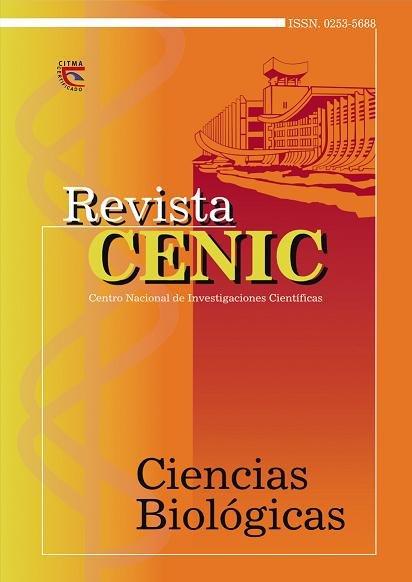Influencia sobre la respuesta inmune del tamaño del espaciador utilizado en la unión covalente de un polisacárido a una proteína
Abstract
The spacer arms are organic chemical reagents that present in their structure, useful functional groups for the covalent union with other molecules. Up to now the moment there are several that are used for the union of two antigens with the objective of increasing the immunogenicity of at least one of them. The influence on immune response of spacer arms with different size used in N. meningitides serogroup C polysaccharide (PMGC)-tetanus toxoid (TT) conjugated was evaluated in Balb/c mice.The 1,3-diaminopropan, 1,6-diaminohexane and 1,8-diaminooctane were used as spacer arms of different size, linked to PMGC and TT by using carbodiimidemediated coupling. The generation of IgM anti PMGC, IgG anti PMGC and IgG anti TT was evaluated in serum from animals by an indirect ELISA.
Also IgG subclasses (IgG1 and IgG2a) anti PMGC were evaluated. The IgG antibodies response of conjugate inoculated was significantly higher than native polysaccharide and this response was size spacer dependent, being significantly higher with 1,8-diaminooctane; a statistically significant increase of IgG2a subclasses was also found in this group. The data suggest that immune response was developed by induction of cellular pattern. The IgG antibodies response of conjugate inoculated was significantly higher than native TT, although significant differences among spacers were not found.
Downloads

Downloads
Published
How to Cite
Issue
Section
License
Copyright (c) 2002 Copyright (c) 2002 Revista CENIC Ciencias Biológicas.

This work is licensed under a Creative Commons Attribution-NonCommercial-ShareAlike 4.0 International License.
Los autores que publican en esta revista están de acuerdo con los siguientes términos:
Los autores conservan los derechos de autor y garantizan a la revista el derecho de ser la primera publicación del trabajo al igual que licenciado bajo una Creative Commons Atribución-NoComercial-CompartirIgual 4.0 Internacional que permite a otros compartir el trabajo con un reconocimiento de la autoría del trabajo y la publicación inicial en esta revista.
Los autores pueden establecer por separado acuerdos adicionales para la distribución no exclusiva de la versión de la obra publicada en la revista (por ejemplo, situarlo en un repositorio institucional o publicarlo en un libro), con un reconocimiento de su publicación inicial en esta revista.
Se permite y se anima a los autores a difundir sus trabajos electrónicamente (por ejemplo, en repositorios institucionales o en su propio sitio web) antes y durante el proceso de envío, ya que puede dar lugar a intercambios productivos, así como a una citación más temprana y mayor de los trabajos publicados (Véase The Effect of Open Access) (en inglés).














